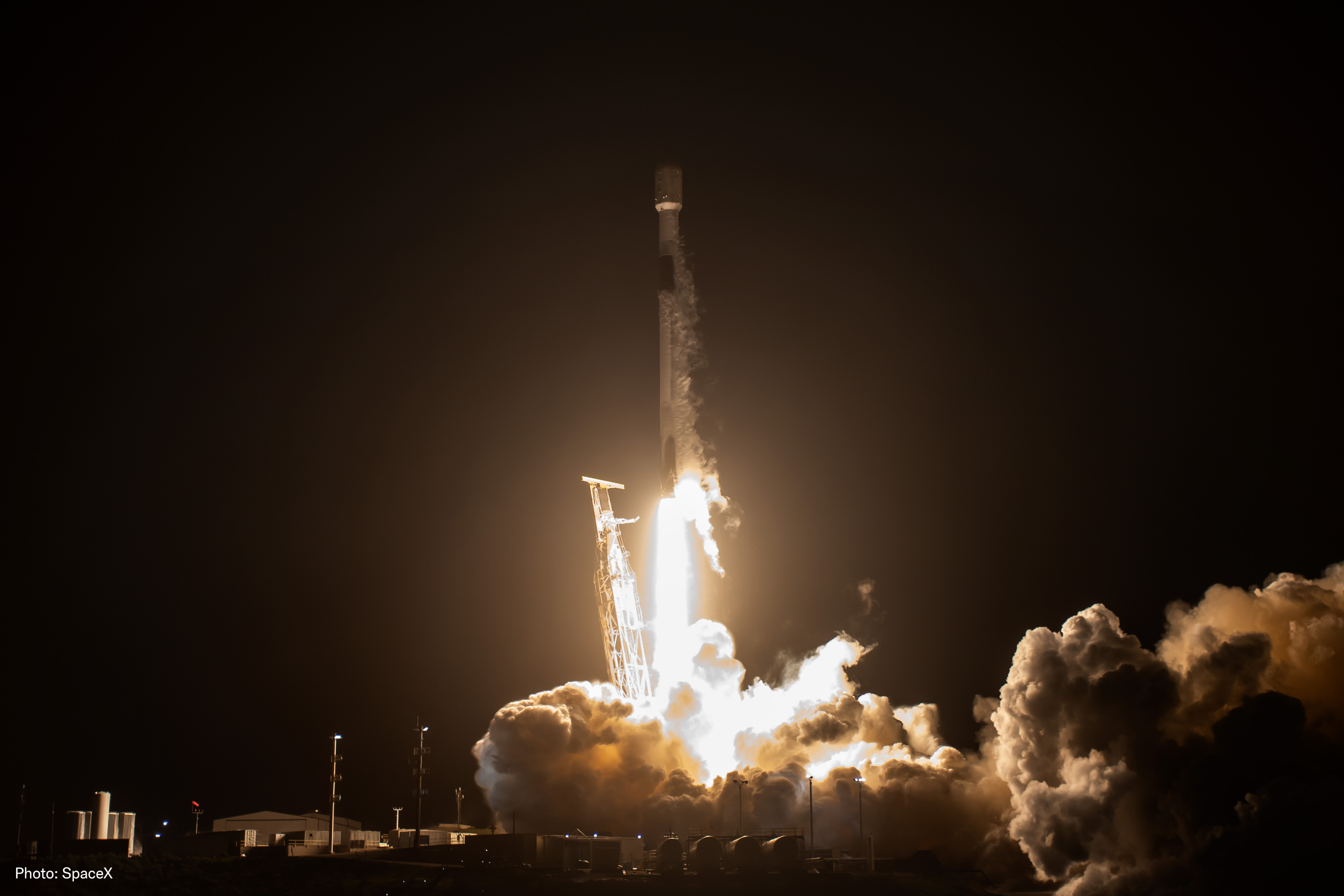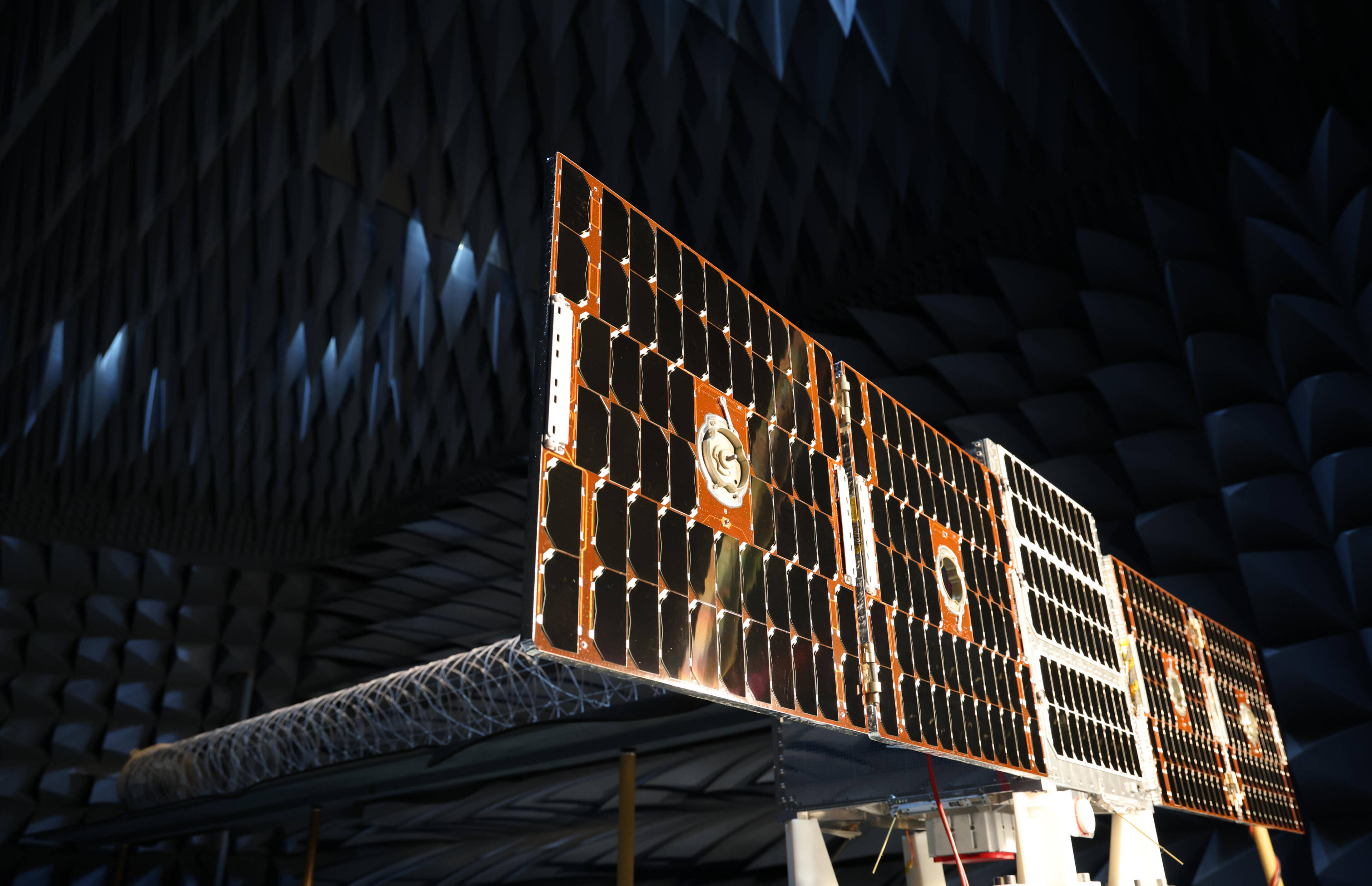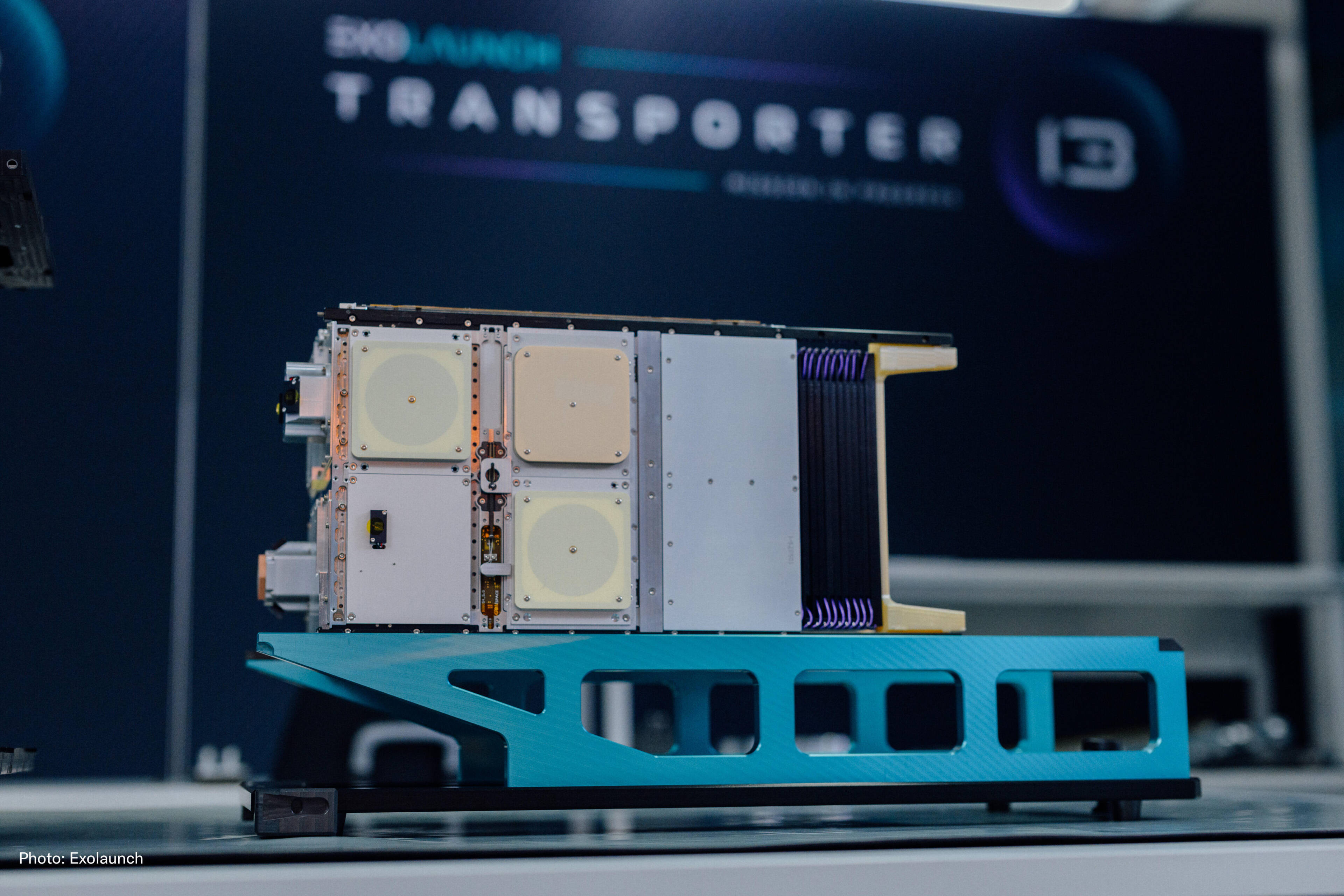
The launch of IOD-1 as part of SpaceX's Transporter-13 rideshare mission.
Photo Credit: SpaceX.

Sponsored Feature: Startical



The satellite IOD-2.
Photo Credit: Startical.
The satellite IOD-1.
Photo Credit: Exolaunch.



Close

The demonstration mission will validate VHF and ADS-B signals transmitted from space, enabling seamless communication between aircraft and ground stations.
A global constellation
Following in-orbit validation, Startical will move towards full deployment of a constellation of over 200 satellites in low Earth orbit (LEO), ensuring real-time global communication and surveillance. To date, the company has successfully conducted ground tests and is preparing to consolidate its presence as a leader in technological innovation in the aerospace field.
Startical has actively participated in regional and international discussion forums of the International Telecommunication Union (ITU) and the International Civil Aviation Organization (ICAO), submitting comments to National Spectrum Regulatory Administrations and providing technical studies to working groups to support the standardization and regulation of satellite-based aeronautical services.
As a result, in December 2023, the ITU World Radiocommunication Conference (WRC-23) approved a new allocation for the aeronautical mobile-satellite (route) service (AMS(R)S) within the aeronautical VHF band (117.975 – 137 MHz), officially authorizing the use of this frequency band from space.
Startical remains actively engaged in the ICAO framework, targeting full standardization before 2029.
Advancing ATM with European support
Both IOD-1 and IOD-2 are part of the ECHOES Digital Sky Demonstrator project, which aims to gather evidence on how this satellite-based solution can enhance ATM services and generate positive environmental effects. Co-funded by the European Union through the Connecting Europe Facility (CEF), the project is managed by the European Climate, Infrastructure, and Environment Executive Agency (CINEA) with support from the SESAR Joint Undertaking.
Through ECHOES, proof-of-concept tests will be conducted in oceanic airspaces across the South Atlantic corridor, including regions over the Canary Islands, Azores-Santa Maria, Dakar Oceanic, Cape Verde, and the Brazilian Atlantic. These tests will involve air navigation service providers such as ENAIRE, NAV Portugal, ASA, ASECNA, and DECEA, demonstrating strong international collaboration and industry interest.
Startical, the company that will optimize air traffic management from space, successfully launched its first satellite, IOD-1 (In-Orbit Demonstrator-1), in March. This marks a major milestone for the future of air traffic management. Following this deployment, the company is preparing for the upcoming launch of IOD-2, scheduled for mid-2025.
Both satellites are designed to demonstrate real-time communication between aircraft and air traffic control centers, as well as precise positioning data transmitted from space. By integrating ADS-B surveillance and space-based VHF communication, Startical’s solution will allow remote airspace, such as oceanic regions, to be managed with the same efficiency as continental airspace. This could enable a reduction in current separation minima without compromising safety.
The solution offers significant benefits for ANSPs, airlines, and passengers. It will enhance efficiency by enabling the creation of optimized routes and allowing aircraft to follow optimal flight paths. This will lead to lower operational costs, improved fuel efficiency, and greater punctuality.
For more information, please contact Startical: startical.com

The launch of IOD-1 as part of SpaceX's Transporter-13 rideshare mission.
Photo Credit: SpaceX.
Sponsored Feature: Startical




For more information, please contact Startical: startical.com

A global constellation
Following in-orbit validation, Startical will move towards full deployment of a constellation of over 200 satellites in low Earth orbit (LEO), ensuring real-time global communication and surveillance. To date, the company has successfully conducted ground tests and is preparing to consolidate its presence as a leader in technological innovation in the aerospace field.
Startical has actively participated in regional and international discussion forums of the International Telecommunication Union (ITU) and the International Civil Aviation Organization (ICAO), submitting comments to National Spectrum Regulatory Administrations and providing technical studies to working groups to support the standardization and regulation of satellite-based aeronautical services.
As a result, in December 2023, the ITU World Radiocommunication Conference (WRC-23) approved a new allocation for the aeronautical mobile-satellite (route) service (AMS(R)S) within the aeronautical VHF band (117.975 – 137 MHz), officially authorizing the use of this frequency band from space.
Startical remains actively engaged in the ICAO framework, targeting full standardization before 2029.
The satellite IOD-2.
Photo Credit: Startical.

Advancing ATM with European support
Both IOD-1 and IOD-2 are part of the ECHOES Digital Sky Demonstrator project, which aims to gather evidence on how this satellite-based solution can enhance ATM services and generate positive environmental effects. Co-funded by the European Union through the Connecting Europe Facility (CEF), the project is managed by the European Climate, Infrastructure, and Environment Executive Agency (CINEA) with support from the SESAR Joint Undertaking.
Through ECHOES, proof-of-concept tests will be conducted in oceanic airspaces across the South Atlantic corridor, including regions over the Canary Islands, Azores-Santa Maria, Dakar Oceanic, Cape Verde, and the Brazilian Atlantic. These tests will involve air navigation service providers such as ENAIRE, NAV Portugal, ASA, ASECNA, and DECEA, demonstrating strong international collaboration and industry interest.
The satellite IOD-1.
Photo Credit: Exolaunch.

Startical, the company that will optimize air traffic management from space, successfully launched its first satellite, IOD-1 (In-Orbit Demonstrator-1), in March. This marks a major milestone for the future of air traffic management. Following this deployment, the company is preparing for the upcoming launch of IOD-2, scheduled for mid-2025.
Both satellites are designed to demonstrate real-time communication between aircraft and air traffic control centers, as well as precise positioning data transmitted from space. By integrating ADS-B surveillance and space-based VHF communication, Startical’s solution will allow remote airspace, such as oceanic regions, to be managed with the same efficiency as continental airspace. This could enable a reduction in current separation minima without compromising safety.
The solution offers significant benefits for ANSPs, airlines, and passengers. It will enhance efficiency by enabling the creation of optimized routes and allowing aircraft to follow optimal flight paths. This will lead to lower operational costs, improved fuel efficiency, and greater punctuality.
The demonstration mission will validate VHF and ADS-B signals transmitted from space, enabling seamless communication between aircraft and ground stations.

